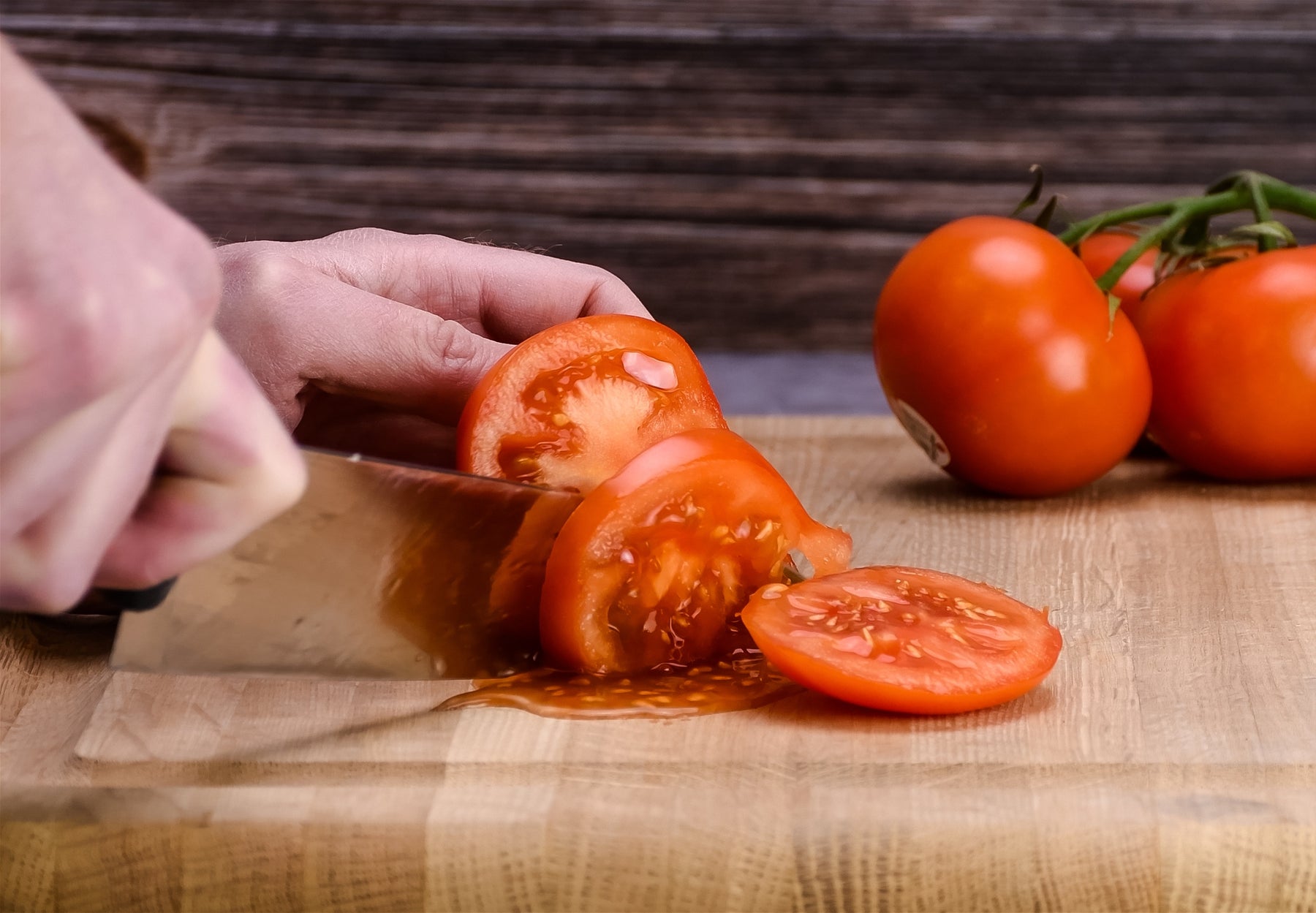4 Signs Your Kitchen Knife is Dull

4 Signs Your Kitchen Knife is Dull
Kitchen knives don’t go dull overnight. Thousands of cuts contribute to your knife becoming dull. Eventually, you can end up using a dull knife without realizing it. There are four simple signs that can help you realize your knife is dull. If you notice any of these signs, you very likely need to sharpen your kitchen knife.
#1 You Have to Saw Your Food

A dull knife requires sawing to cut a vegetable, while a sharp knife can slice through in one pass.
A sharp knife can push or slice through most fruits, vegetables, and meats. However, a dull knife will require a sawing action to compensate for the lack of sharpness. Imagine someone filleting a fish or trimming a piece of meat. A sharp knife can make the cut in one pass and will leave a very clean cut. A dull knife requires more pressure and a sawing motion to compensate for the lack of sharpness. This is often the first sign that your knife is dull.
#2 Your Knife Crushes Your Food

A dull knife crushes a tomato, making a big mess.
#3 You Have to Use the Tip of Your Knife

A dull knife often can't even cut, so we resort to using the point of the knife to start the cut.
While there are plenty of good reasons to use the tip, such as coring a tomato, most cuts use more than just the tip. By using the point of the knife, you can force the tip to cut when the main edge of the blade won’t cut. One example is trying to break the skin of a tomato. If the blade of your knife slides right over the skin, you have to start the cut by using the point.
Remember pressure is a measure of force and area. By using a small area of the knife tip, you can increase the pressure on the area you’re cutting, allowing a duller knife to start the cut. Using the tip or point is inefficient, sometimes dangerous, and often wrong.
#4 You Need to Use Two Hands to Cut

A dull knife needs more pressure to cut. This encourages you to use dangerous cutting techniques like using your second hand for extra pressure.
A sharp knife requires very little force to cut. Using one hand to provide downward pressure is more than adequate. If you notice that you’re using your off-hand to add extra pressure to the knife's spine, you likely have a dull edge. This action is particularly dangerous when you let your finger grip the spine or side of the knife. It is too easy to let your fingers creep down toward the cutting edge and that is just unsafe. The exception to this is if you’re using an open palm on the spine of the knife for chopping nuts, the second hand is simply used for control, not extra pressure.
If you notice any of these 4 signs, your knife is dull and needs to be sharpened. We have many great ways to sharpen kitchen knives. If you desire additional assistance, our friendly sharpening specialists are trained to answer your kitchen sharpening questions, and they specialize in helping beginners sharpen their first knife.

